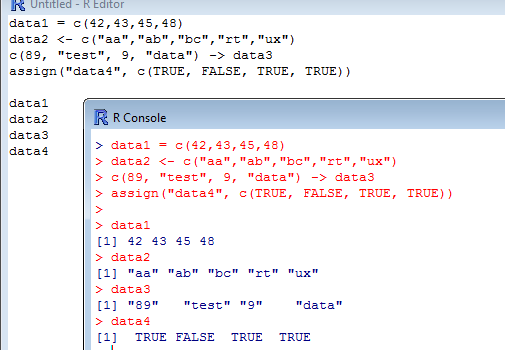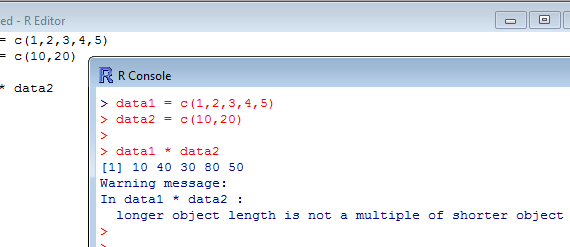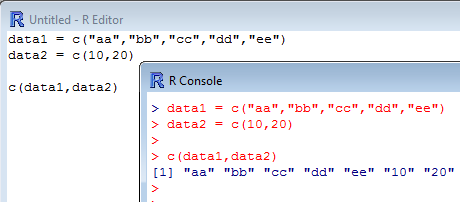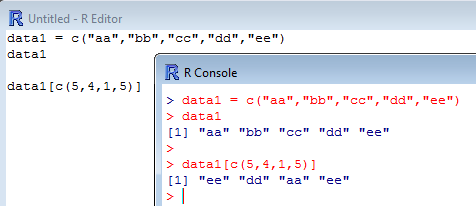The name that you choose for your vector may be a single character (such as X) or a word (such as data) but you are allowed/encouraged to be more creative. It may be a more or less abstract sequence of letters and numbers (dataEXT2), a combination of words separated by […]
R -2- Creating vectors

In R, storing data under a specific name is called assignment. There are at least 4 ways to assign data in R: a. with the operator = b. with the operator <- c. with the operator -> d. with the function assign("name,..."). Here is a practical example where single values […]
2. Assigning data elements to a vector

Now that you have stored values or data elements in vectors, you may start working with/on these vectors. The simplest operations that you can perform are regular arithmetical operations such as addition, subtraction, multiplication and division. Here is an example where the vector data1 is multiplied by 5: [code language=”r”] […]
3. Simple arithmetical operations involving vectors

Not only you can perform arithmetic operations to vectors, but you can also “merge” them or combine them. To do so, simply use the concatenate function c(...) to concatenate the two vectors,: [code language=”r”] data1 = c("aa","bb","cc","dd","ee") data2 = c(10,20) c(data1,data2) [/code] The example above is a bit particular […]
4. Combining vectors

A good thing when working with vectors is that R does not try to reorder the data elements to be stored upon assignment. This means that the order in which the elements have been concatenated remains! Thus, one can easily call any element of a vector by mentioning its position […]
